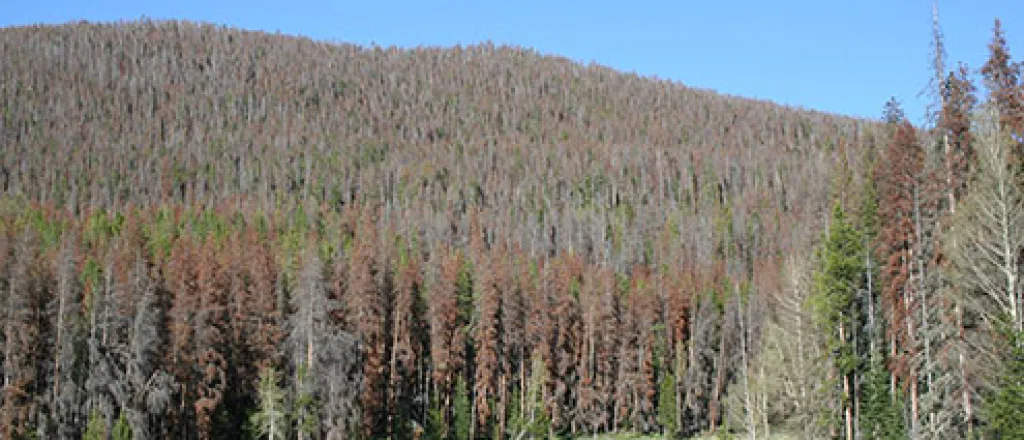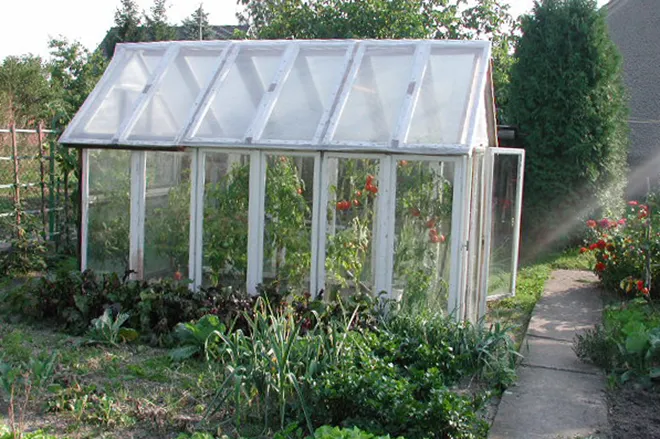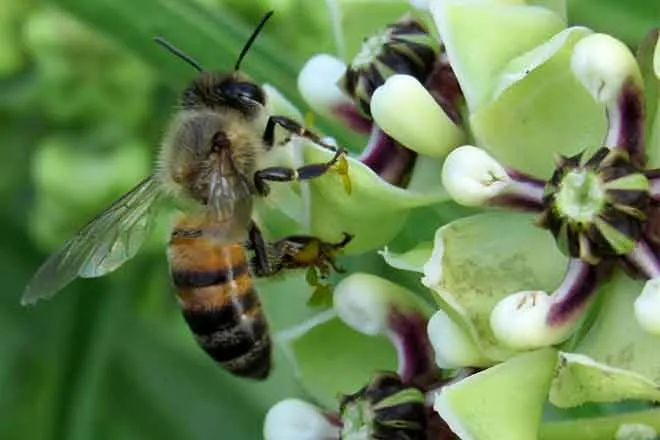
Give Your Trees the Once-Over During National Tree Check Month
As Labor Day and the end of summer approaches, it’s a great time to take stock of the trees in our urban landscapes. August is National Tree Check Month. Why is it important to check our trees and make sure they are healthy, strong and pest-free?
Sometimes we take trees for granted; we don’t think about how much they contribute to our quality of life. Trees serve as wind breaks, sun shields, they muffle noise and block unsightly views. They help conserve energy and water. Trees, prevent soil erosion, provide habitat for wildlife and clean the air. For all trees do for us, now is a great opportunity to take 10 minutes to check yours.
What do we look for? The Front Range, high plains region of our State is a difficult place to be if you are a tree. Mother Nature throws all sorts of temperature swings, drought, flood and any number of other weather extremes at our trees. Trees under stress will start to exhibit early fall color, thinning of leaves in the upper canopy and dead, dying branches. Check leaves for the presence of black or tan spots, which might be an indication of fungus caused leaf spots, check branches and trunks for presence of small holes that indicate emergence from boring insects.
In Colorado, there are many indigenous boring insects whose, larval stages live inside the tree, feeding on tissues that conduct water or provide storage of energy. Insects like lilac ash borer, ash bark beetle, Flatheaded apple tree borer, and poplar borer are not tree killers, but their presence indicates tree stress. More information can be found at http://extension.colostate.edu/topic-areas/insects/shade-tree-borers-5-530/.
Mountain pine beetle is also native and will cause death of lodge pole and ponderosa pine under periodic epidemics. The shape and size of an emergence hole combined with larval gallery patterns and other symptoms help us determine which insect might be present, refer to this link for more information on boring insects in ash.
Invasive, non-native insects like Emerald Ash Borer are tree killers. EAB has been confirmed only in Boulder County. However, everyone should be on the look-out for EAB on Ash as well as another invasive borer called Asian Long-horned beetle (ALB). ALB is not yet known to be in Colorado, it attacks 12 different types of trees preferring maple. ALB is pest we definitely do not want in Colorado; early detection is the key to protecting our trees. Check maples for round exit holes, chew marks in the bark, sawdust-like material on the round or on tree branches, dead branches, and tunneling in cut wood or fallen branches. Also look for adult beetles on trees, walls, outdoor furniture, cars and sidewalks. The beetle is 1 to 1.5 inches long, with six legs and a shiny, jet-black body with white spots and two long black and white antennae.
What do we do?
- Clean up leaves that fall due to fungal leaf spots. At this time of year sanitation is the best line of defense and is aimed at reducing the problem for next year. The monsoonal moisture we experienced in July and August favored outbreaks of fungal leaf spots diseases on aspen, maple and oaks. The diseases do not kill trees, but may cause early leaf fall.
- Water trees in the fall and winter. Just because the calendar may ‘say’ that it is no longer summer, we often face long dry fall and winter periods with no snow cover and high winds. As long as the ground is not frozen and the temperatures are above 40 during the day, our trees and turfgrass benefit from dragging the hose around and giving them a little water every month or so. Water only when air temperatures are above 40 degrees F. Apply water at mid-day so it will have time to soak in before possible freezing at night. A solid layer (persisting for more than a month) of ice on lawns can cause suffocation or result in matting of the grass.
- Assess the amount of damage to a tree; severe wounding of the trunk or more than 40% dieback (dead branches) in the canopy area are indications that the tree might better be replaced rather than ‘saved’. Early to mid-September is often a great time to plant new trees. Prices at nurseries are often discounted at the end of the season. For best success do not plant trees after late September.
- Plant for increased tree diversity. Avoid ash, which is susceptible to EAB. Pay attention to the types of trees on your street or in your community; overused trees include Linden, Spruce, and Austrian Pine. Colorado State University Extension is a great resource for tree species selection and has suggestions for alternatives.
- Don’t Move Firewood! When that tree on your property needs to be removed, dispose of the wood by chipping or reusing the wood locally. Don’t risk starting a new infestation of an invasive insect or disease.
You have the power to save trees. Don’t take firewood with you on your camping trip, RV adventure, or up to your hunting camp. Don’t bring firewood back from your second home to your place in the suburbs. Don’t bring it with you on your scout’s camping trip. Instead, buy it where you’ll burn it.














